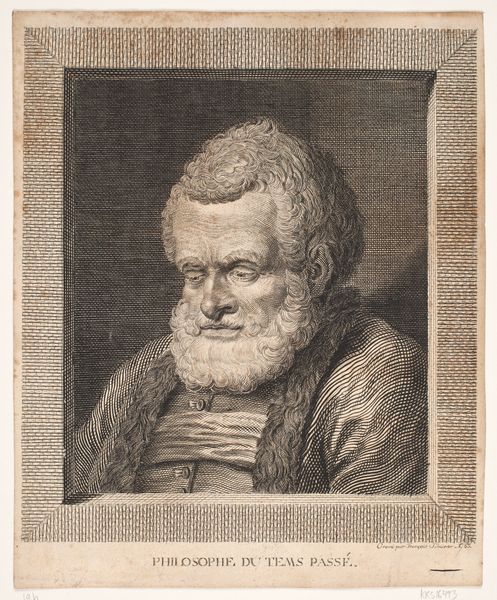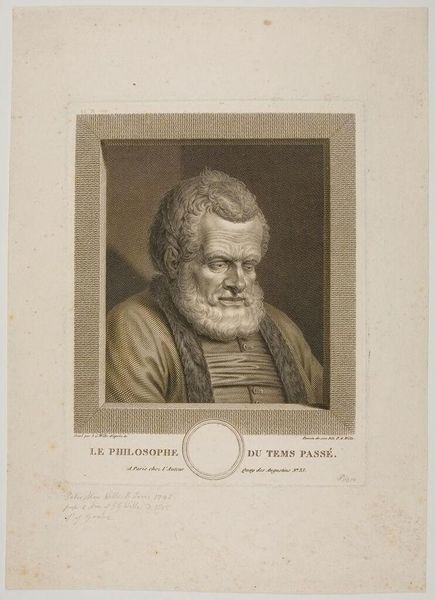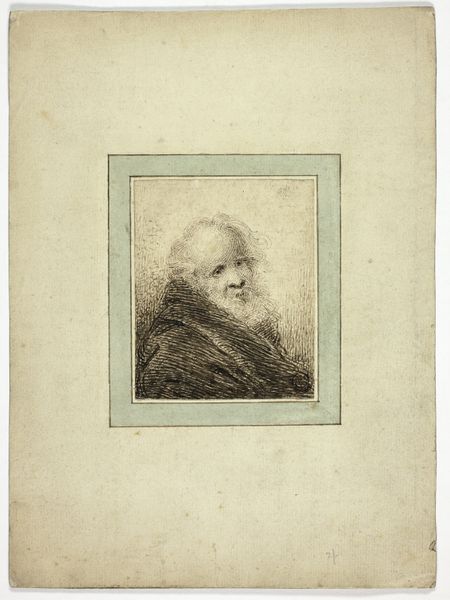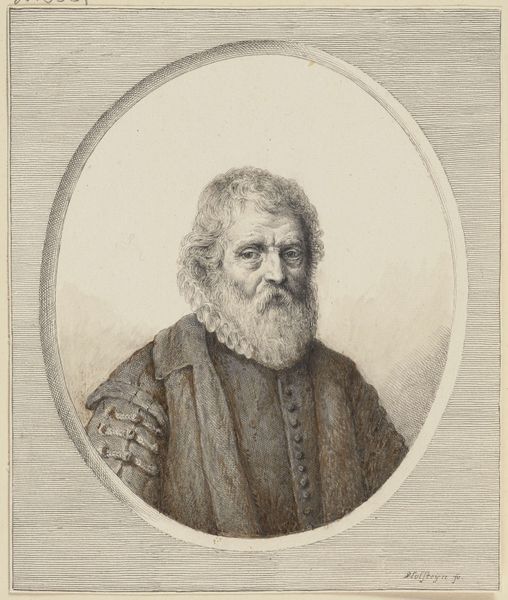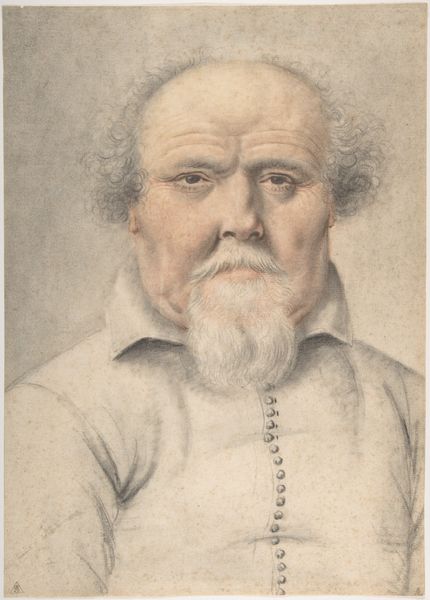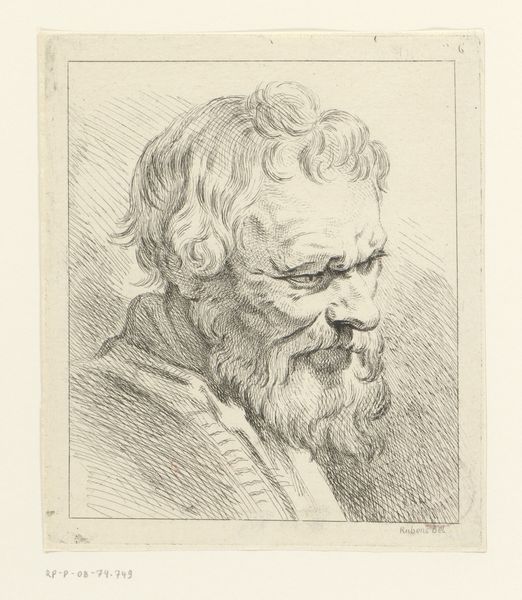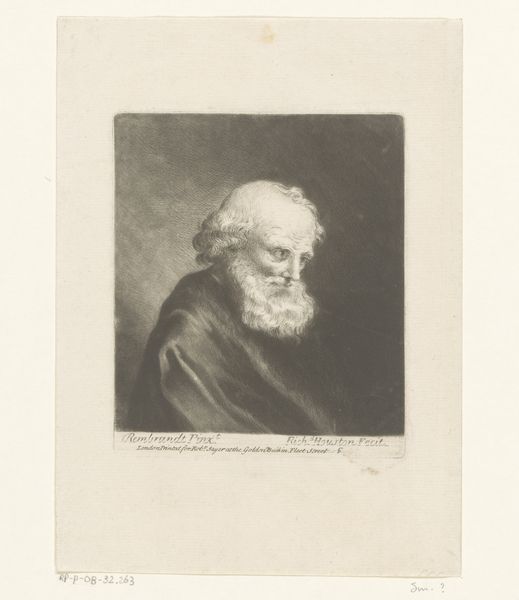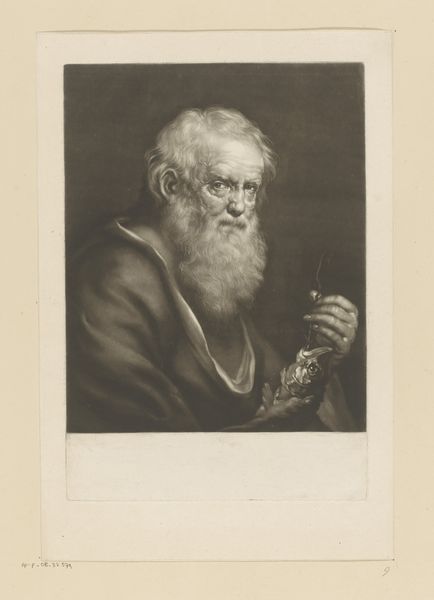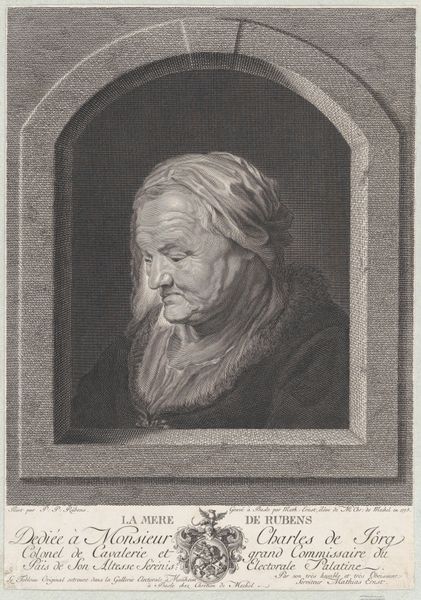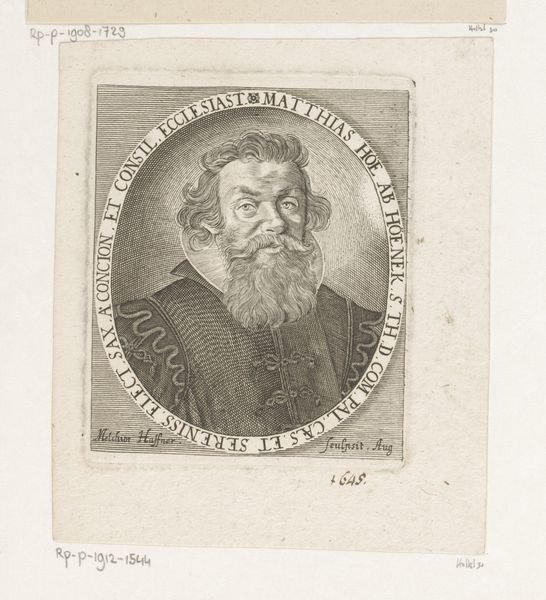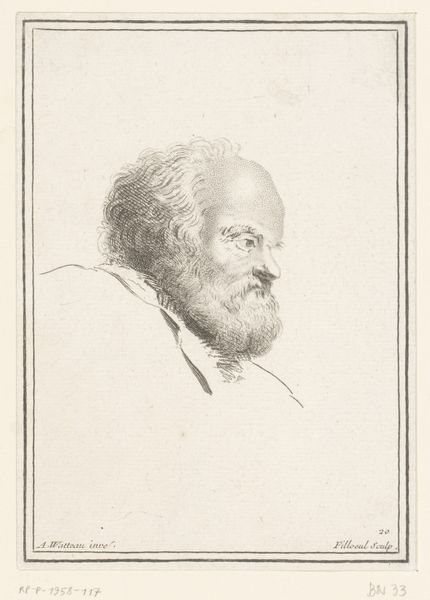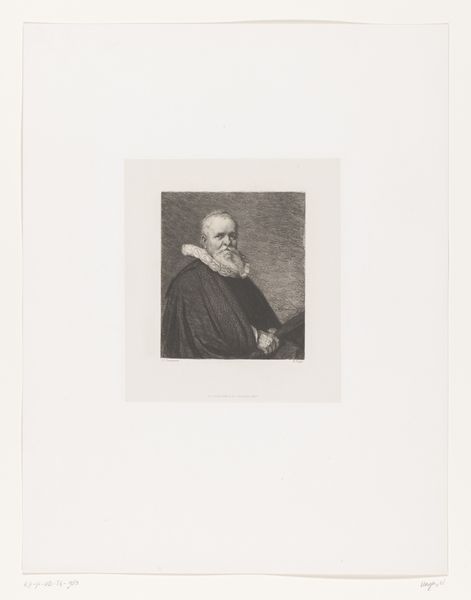
engraving
#
portrait
#
neoclacissism
#
form
#
line
#
engraving
#
realism
Dimensions: height mm, width mm
Copyright: Rijks Museum: Open Domain
This print of a pensive old man was made by Johann Georg Wille, an engraver working in 18th-century Europe. Prints at this time were a popular way of circulating images and ideas, and could be bought and sold in print shops and even used as illustrations in books. Here, Wille presents us with a portrait, framed like a window or a painting. The man’s furrowed brow and downcast gaze project an image of wisdom gained through experience, of a life fully lived. This interest in the individual and their interiority reflects broader cultural trends from the period. The Enlightenment was a period that emphasized reason and observation, and it was accompanied by an increasing interest in representing the full range of human emotion. Engravings such as these would have been produced for a market of collectors and connoisseurs. To fully understand this image, we might investigate the history of printmaking and explore the print market of the time. By studying related artworks and historical documents, we can better understand the social and institutional context that shaped its creation and reception.
Comments
No comments
Be the first to comment and join the conversation on the ultimate creative platform.
